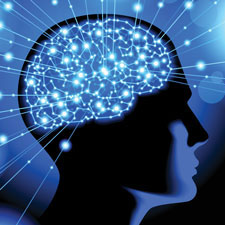Disposing of the Placebo Model of Neurofeedback
by Siegfried Othmer | December 27th, 2017
It is quite remarkable that after a fifty-year history in research and practice the question is still open in some minds as to whether the effects of the neurofeedback exercise might be attributable to the placebo, that nebulous entity that mediates somehow between mind and body. It is even more remarkable that this is occurring in the New World, which long ago found pragmatism to be a more useful way forward than proceeding on the basis of abstract principle. We do neurofeedback because it works–consistently.
It is particularly bizarre that the placebo question should be kept alive with a method that is so obviously physiologically based. When such a method is evaluated, as it should be, with physiologically grounded evaluation techniques (functional testing; evoked potentials; connectivity indices; etc.), we encounter no contradictions. We do encounter surprises, but these just raise new questions. Everything in our experience, whether clinical or scientific, draws us forward into further exploration and development, and in our case, it has done so for thirty-three years.
The critics try to drag the discussion onto a philosophical plane where resolution is deucedly hard to come by. The philosophers have held us in their grip since Plato. The placebo model is solidly rooted in the dualism of Descartes. There is the physical body—the ‘machine’; and then there is the mind—the ‘ghost in the machine’. Their relationship has been problematic to philosophers. As it happens, the current issue of Lapham’s Quarterly has a delightful article by Anthony Gottlieb titled “The Ghost and the Princess,” about the evolution of Descartes’ thinking, challenged in this process by a noble woman who professed no expertise beyond good common sense (https://www.laphamsquarterly.org/states-mind/ghost-and-princess). Descartes allowed for an intimate connection between the mind and the body, but also had to accommodate the survival of the soul after death. Merging these two into one unitary picture remained problematic. If the mind had no physical attributes, how could it influence matter? And if the soul had physical aspects, how could it survive the death of the body?
The placebo, then, refers to the mysterious workings of the ‘ghost’ upon the ‘machine’, to put it plainly. The field of medicine tends to the machine, and if issues involving the ghost are involved, referrals are made to the psychiatrist. Psychology stays out of the way of Medicine by tending only to matters of the mind. The mysterious middle ground has remained the playground of philosophy, or as the ‘hard problem’ of consciousness to those scientifically inclined. It has remained a demilitarized zone when it comes to therapeutics.
So, the stage is set for the arrival of neurofeedback, which engages directly with the play of the neural networks. We are sitting at the very cusp of the mysterious mind-body connection, but we encroach upon the issue from the hardware side. This is not mysterious in its essence, just in its particulars, which are subject to formal study. We no longer have Descartes’ problem of lacking a working model for the mind-body connection. The mind is an emergent property of neural network functioning, the elaboration of simple awareness into abundant complexity in the human brain. At a sufficient level of complexity, we have reflexivity—awareness of awareness, or in other words, self-awareness. Self-awareness is consciousness– another step in the complexity and the hierarchy of awareness. So we need not be diverted into what is called the hard problem of consciousness. We finesse it. In neurofeedback, our entire conversation can be about the neural networks because in neurofeedback the entire conversation can be “by the neural networks, with the neural networks”. Consciousness is not required. The mind is not irrelevant to the actual process, but it is not essential, so we need not stumble over that issue. If neurofeedback can be done without the supervision of the mind, then it cannot be reducible to the placebo. Done.
We are pragmatists, and we are empiricists. We talk about what we can actually measure. We are not unmindful that we remain surrounded by mysteries on all sides. But the mysteries do not divert us from our agenda. We also observe that those who press the placebo model most urgently are often the ones who have a professional interest in confusing matters, in preventing neurofeedback from becoming recognized. The history of hostility to paradigm-breaking new ideas among scientists is one of those mysteries of the mind, but sometimes such hostility is just rooted in self-interest and is then no mystery at all.
Neurofeedback presents a profound challenge to prevailing therapeutic models in the established health care system, and to the academic institutions that are in symbiotic relationship with it. Academicians know that the only way the placebo model can be experimentally quarantined in a manner that is acceptable to other academicians is through group studies. That essentially puts academics in charge, as such studies would be difficult to conduct in clinical settings. Being unpersuaded of the merits, however, the mandarins haven’t bothered to undertake such studies in the first place. Of course, we clinicians have our own ways of ruling out the placebo model, and these are completely sufficient to the task. These are covered in the upcoming newsletter, and then we hope to be done with this topic. We may at any time return to the topic in order to pull the tail of the remaining unreconstructed critics.





